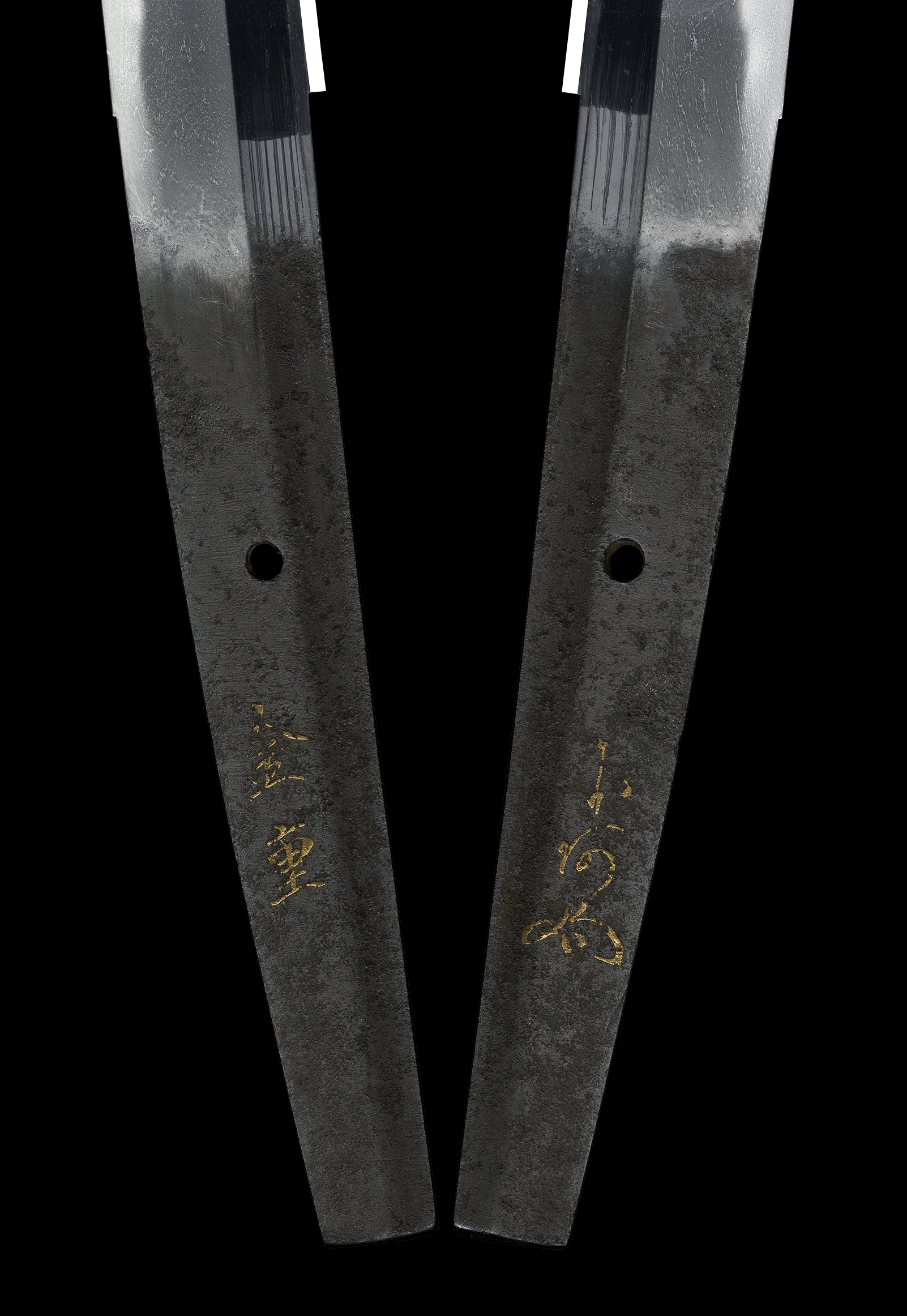Previous answer is
Kinpunmei (Gold-inlaid signature) Kinjū
Hon'ami (Kaō) (Kōryō)
金粉銘 金重(きんじゅう)
本阿弥(花押)(光瞭)
Features: Kinjū moved from Echizen Tsuruga and, alongside Shizu Saburo Kaneshige, contributed to the development of the Mino smithing tradition.
His works are extremely rare.
His jigane resembles itame, and his hamon features small, controlled gunome midare, largely resembling that of Shizu Kaneshige.
The nie structure is magnificent, with brilliant kinsuji streaks adding an extraordinary touch to this sword.
=====================================
Appraisal Quiz #833 (February 8tht, 2025)
Who made this sword do you think ?
=====================================
Blade Length: 2 shaku 4 sun 4 bu 5 rin (74.1 cm / 29.17 in).
Curvature: 5 bu 0 rin (1.52 cm / 0.60 in).
Mekugi Hole: 1.
Width at Base (Motohaba): 3.19 cm (1.26 in).
Width at Tip: 2.18 cm (0.86 in).
Thickness (Kasane): 0.75 cm (0.30 in).
Sword Weight: 860 g.
Shape: The blade is wide, thick, and has a deep curvature.
Jigane: The steel has a well-forged, fine-grained texture with excellent nie (crystalline particles).
Hamon: The temper pattern consists of a nie-based gunome-midare (irregular wavy pattern),
transitioning to a sudare-ba (bamboo-blind pattern) with large gunome-midare.
=====================================
Answer will be posted at next Appraisal Quiz.
=====================================
(Please acknowledge not replying to mail about Appraisal Quiz by our convenience.)


